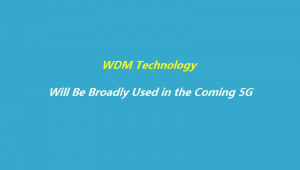
Here’s a frequently asked question to address questions that have arisen from the significant uptick in the use of 25G transceivers, which is driven by high bandwidth demands in the enterprise, data center and service provider applications.
1. Why is the use of 25G increasing?
Many network operators have chosen 25G instead of multiple 10G’s because 25G provides 2.5x bandwidth of the 10G in the same familiar SFP form factor at approximately the same power. This has enabled network equipment manufacturers to provide higher bandwidth connectivity. Rack-mountable switches and routers populated with 12 ports, 24 ports, and 48 ports on a single 1 RU faceplate are common for SFP.

2. What is the cost per bit of 25G?
25G provides 2.5x the bandwidth of 10G at a slight increase in cost. The result is nearly a 50% reduction in the cost per bit.
3. Is 25G standardized?
The IEEE (Institute of Electrical and Electronic Engineers) has standardized 25G. See IEEE802.3by and IEEE802.3cc for the details.
4. Which popular Gigalight’s 25G transceivers are available today?
25G SFP28 ER Lite 20km Industrial
25G LWDM SFP28 ER 40km Industrial
25G SFP28 BiDi 10km Industrial
25G SFP28 BiDi 20km Industrial
25G CWDM SFP28 10km Industrial
5. What is SFP28?
SFP28 is the standardized pluggable form factor for 25G transceivers. It has the same mechanical dimensions as 10G SFP+ and 1G SFP. The electrical interface of 25G was envisioned to operate up to 28Gbps to accommodate overhead for a 25Gbps signal. Today most 25G transceivers operate at a 25.78125Gbps nominal data rate. The standards body that defines SFP28 is SFF (Small Form Factor Committee).
6. What is SR?
SR is Short Reach, and generally refers to transceivers that operate over MMF up to a few 100 meters.
7. What is LR?
LR is Long Reach, and generally refers to transceivers that operate over SMF at up to 10km.
8. What is ER?
ER is Extended Reach, the data rate of the transceivers support distance up to 40km over single mode fiber and use 1550nm lasers.
9. What is BiDi?
BiDi is called bi-direction as well. BiDi transceiver usually consists of two different wavelengths to achieve transmission in both directions on just one fiber (single-mode or multi-mode). Unlike general optical transceivers which have two ports, BiDi transceivers have only one port.
10. What is CWDM?
CWDM is Coarse Wavelength Division Multiplexer, a process of combining multiple wavelengths into a single fiber optical cable. Considering the smooth evolution of 5G equipment and the development of the industry chain, 25G CWDM SFP28 solution can well solve the current 5G millimeter wave pre-transmission problem.
11. What does “10/25G” mean?
These are dual-rate transceivers that support both 10G and 25G rates.
12. What New Technology Is in 25G Transceivers?
25G transceivers have CDR (Clock Data Recovery) circuits and generally require FEC (Forward Error Correction).
13. Where can additional information about Gigaligh 25G transceivers be found?
See the Gigalight 25G: https://www.gigalight.com/5g-fronthaul-optical-transceivers.html

